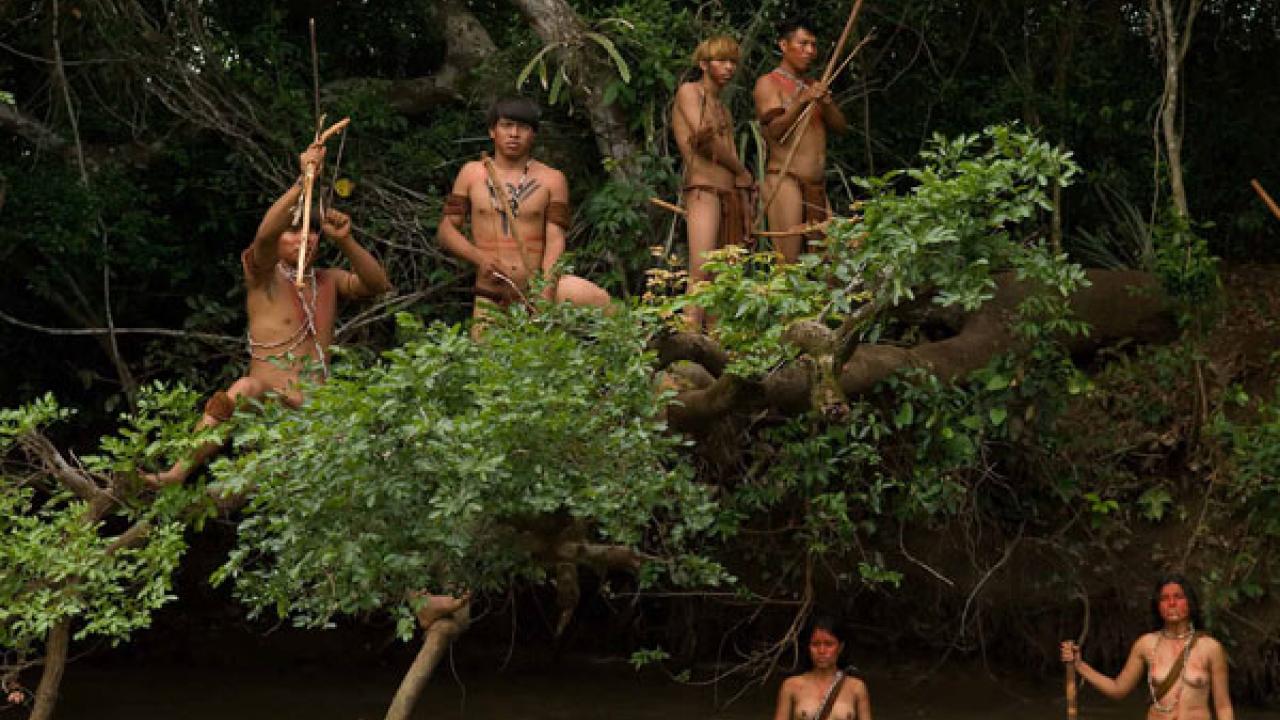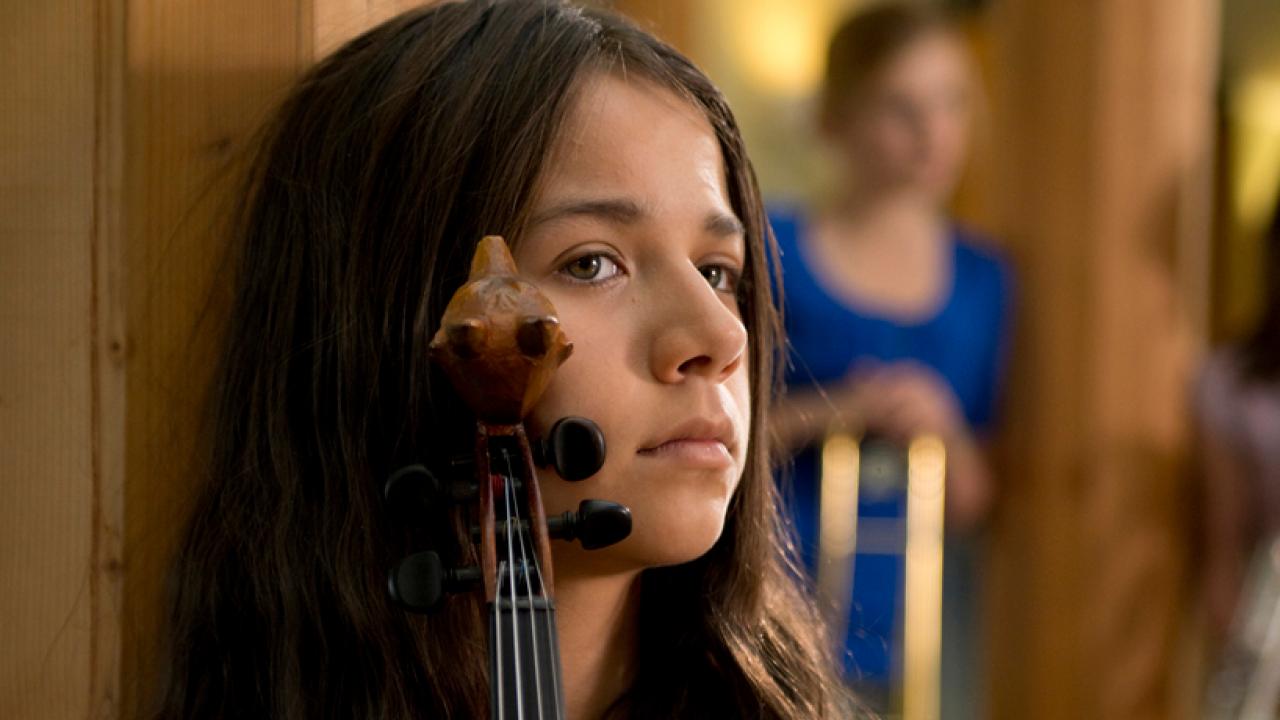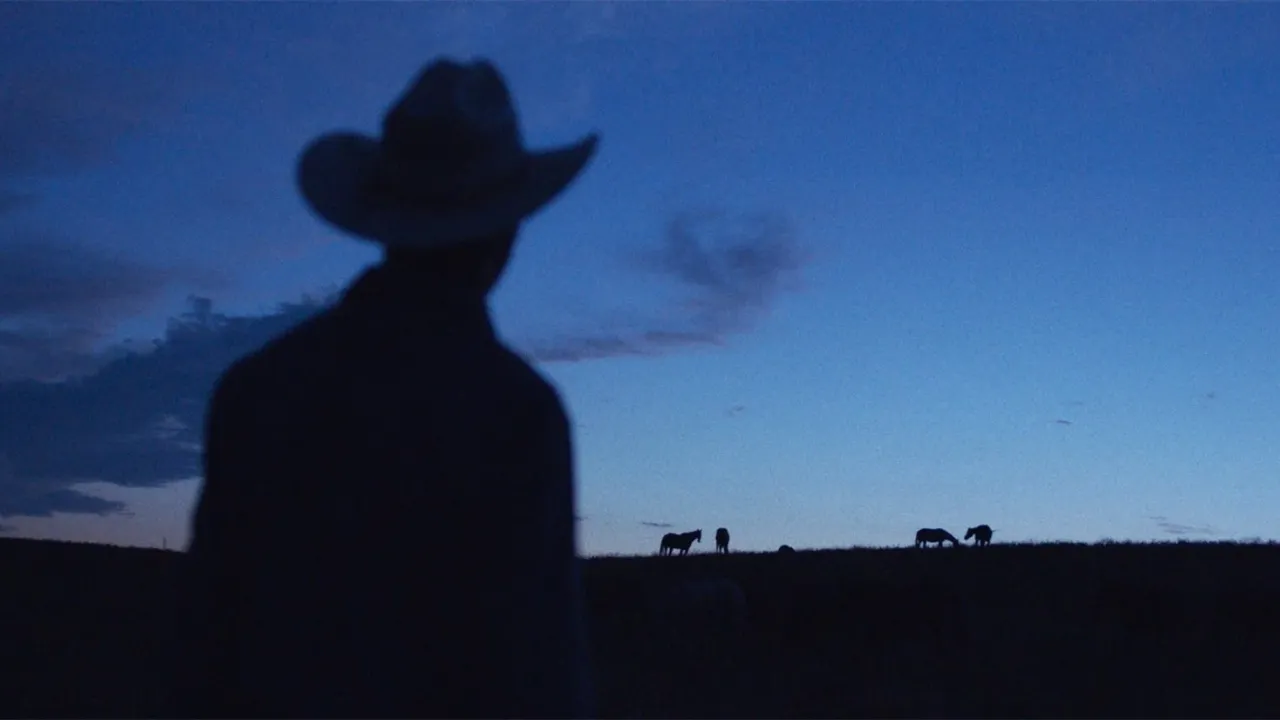Kategorie: Interview
"Indigenous Films Decolonize Historical Cinema Discourses"
Interview with culture and literature scientist, Prof. Dr. Kerstin Knopf, about the colonialist view of the Western movie and the self-portrayal of indigenous filmmakers.

Kerstin Knopf is Professor of North American Postcolonial Literary and Cultural Studies at the University of Bremen. She previously studied American and Canadian Literatures and Cultures in Greifswald, Gothenburg, Los Angeles and at the First Nations University in Regina, Canada. She wrote her doctorate on the subject of "Decolonizing the lens of power: Indigenous Films in North America".
kinofenster.de: The history of North America is marked by the violent colonization of the continent’s Indigenous population. How is this part of North American history remembered today?
Kerstin Knopf: In the US, colonial history, namely the fact that the entire US society is built on stolen land, gets very little attention in the public discourse. It is different in academic discourse, where the colonial past is ever-present, in the academic disciplines of history, literature culture and above all in Indigenous studies and the recently-established settler colonial studies, which specifically address forms of colonialism in which settlers displace and oppress the traditional population. And of course the Indigenous community is only too aware that their current living conditions are a result of colonization and assimilation policies. There had been political activism by Indigenous groups in the US since the 1970s and in Canada since the 1990s. With regard to public discourse, we must distinguish between the US and Canada. This is evident from, among other things, the apology by the Canadian government to Indigenous people who were committed to so-called Residential Schools with the aim of assimilating them.
kinofenster.de: That was in 2008. The US government apologized in 2010 for similar practices of forced assimilation. Is there no comparison?
Kerstin Knopf: The apology by the US government was not as comprehensive and did not receive the same echo in the public discourse. In Canada, there was a state ceremony with a speech by the then Prime Minister Stephen Harper, and the Truth and Reconciliation Commission was established. Furthermore, there were reparations, CAD 10,000 per person for the first year in such a school and CAD 3,000 for every additional year. Victims of physical or sexual violence received larger sums. None of this has happened on a national level in the US, although this policy of assimilation was imposed analogously in both countries.
kinofenster.de: What happened as a result of this assimilation policy?
Kerstin Knopf: Generations of Indigenous children were forced into the usually Christian Boarding Schools (US) or Residential Schools (Canada). They were separated from their parents, alienated from their culture, prohibited from speaking their language and banned from observing cultural customs. If they broke these rules, they received Draconian punishment. Sexual abuse was also systematic there. Many children died at these schools due to the strict regime and poor nutrition and hygiene. These experiences left behind severe traumas across generations. The social repercussions in the Indigenous Communities are evident to this day in the form of dysfunctional families, drug abuse and alcohol abuse.
kinofenster.de: The image of Native Americans was essentially formed by the Western movie genre throughout the world.
Kerstin Knopf: Not only that, but for a long time the Zum Inhalt: Western moviedetermined the image of the US like no other film Zum Inhalt: genre. Certain stereotypes, which the movies gleaned from written discourses, were transported in depictions of Indigenous people: For example, on the one hand you have the "bloodthirsty savage", on the other, the "noble savage". The "bloodthirsty savage" is out to attack coaches or settler communities, kill people, kidnap children and rape women. The "noble savage", on the other hand, is a romanticized often also erotic figure: a lover of nature who lives out his culture and has a deep sense of tradition. That was and is a projection screen for Western Europeans. The phenomenon can be seen in Germany in the popularity of the Karl May books and film adaptations, the so-called "Indian Films” made by DEFA, the Karl May Festival that continues to be held annually and the popularity of Indian costumes at carnival. Hartmut Lutz coined the term "Indianthusiasm" to describe it.
kinofenster.de: "Dances with Wolves" of 1990 aimed to change this image. Does the film achieve a more authentic portrayal of Indigenous people?
Kerstin Knopf: The film was billed as a revisionist Western movie that treats Indigenous cultures sensitively and largely works with Indigenous actors. Of course, it also uses the Lakota language, although the translations can be quite awkward, which got laughs from Indigenous audiences. In the Zum Inhalt: documentary film "Reel Injun" (Neil Diamond, Catherine Bainbridge, Jeremiah Hayes, USA 2009), the Indigenous actors tell us that they got lower pay and were disadvantaged in comparison to the White actors. And if you look more closely at "Dances with Wolves", you can see the two poles between which the depiction of Indigenous people oscillates: on one side, you have the "blood-thirsty" Pawnee, on the other the Lakota as "noble savages", with whom the White hero forms an alliance. This polarization is evident in the way the two tribes are portrayed.
kinofenster.de: Does the film still form part of discussions about the representation of Indigenous people?
Kerstin Knopf: We now have so many examples of self-representation by Indigenous filmmakers that "Dances with Wolves" is not talked about much in this context. Since the late 1990s, Indigenous cinema has been booming, not only in the US and Canada, but also in New Zealand, Australia and parts of Latin America and the Philippines.
kinofenster.de: Since when has there been Indigenous filmmaking?
Kerstin Knopf: Even as far back as in Hollywood’s Zum Inhalt: silent film age, we can find two Indigenous directors in James Young Deer and Edwin Carewe. Their films, which also included Western movies, were not perceived as Indigenous filmmaking because they were oriented toward the prevailing representations in Hollywood. A good deal later, there followed a number of films by non-Indigenous directors which addressed Indigenous issues, such as "House Made of Dawn" (Richardson Morse, USA 1972). In the 1980s, the first Indigenous movies came out in New Zealand, Papua New Guinea and Norway. The first big Indigenous movie from the US that got international attention was "Smoke Signals" (Chris Eyre, USA/CA 1998). In one Zum Inhalt: scene that has become well-known, the film satirically riffs on "Dances with Wolves". Shortly afterwards, the mini-series "Big Bear" (Gil Cardinal, CA 1999) and "Atanarjuat: The Fast Runner" Zacharias Kunuk, CA 2001) came out in Canada. The film uses the Inuit language Inuktitut throughout (with subtitles) and won the Golden Camera at Cannes. Since then, we have seen dynamic growth. Back then, there were about two new Indigenous film releases every year, today there are twelve to twenty feature length film productions per annum.
kinofenster.de: What is different about Indigenous film productions?
Kerstin Knopf: Indigenous films decolonize historical cinematic discourses. This begins with the employment of Indigenous people in front of and behind the camera. In terms of content, it is often about reassessing colonial history, the portrayal of a people’s own culture, but it can also be about contemporary issues: relations with settler states and the mainstream of society, social and political problems. Documentary film production by Indigenous filmmakers is exponentially higher than feature film production. At the recently-held "Indian-Inuit – The North America Film Festival", a children’s film was screened: "Tia and Piujuq" (CA 2018) by Lucy Tulugarjuk. It’s about the daughter of Syrian immigrants in Canada who is given a book with Inuit drawings. In her childlike imagination, she conjures up a girlfriend in the Arctic. On her time travels there, she learns about Inuit culture and ancestors. Films like this now move beyond Indigenous cultures and focus on transnational or transindigenous issues, which we will see more of in the future.


